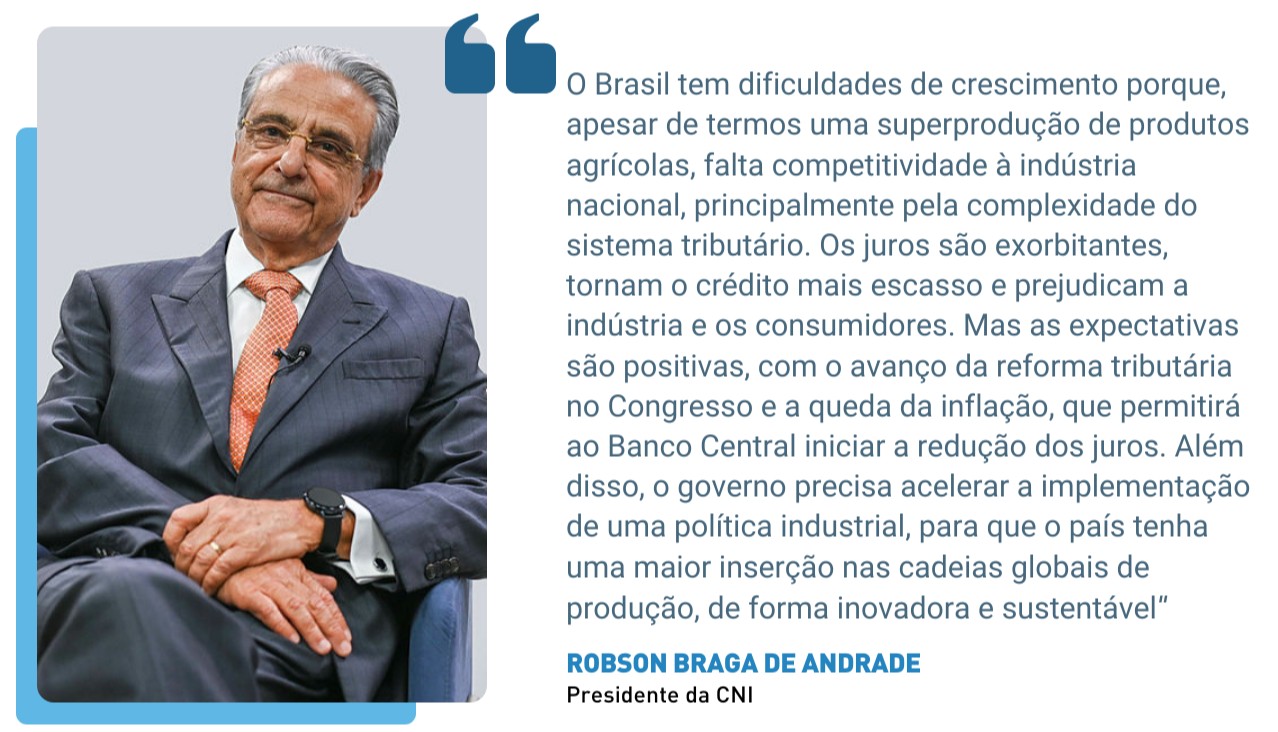Confederation shows that expansion is not greater because industry and services have lost steam. To have sustained development, Brazil needs industrial policy, tax reform and low interest rates
The National Confederation of Industry (CNI) projects that, this year, the Brazilian economy will grow 2.1% compared to last year and the Gross Domestic Product (GDP) of the industry will be 0.6%, with a drop of 0. 9% in the manufacturing industry.
The data are from the Conjunctural Report – 2nd quarter of 2023 , released this Thursday (13), and show a slowdown compared to 2022, with a particularly challenging scenario for the industry and for the more credit-sensitive retail activities.
Informe_conjunctural_2trim2023.pdf (4.0 MB)

According to the manager of Economic Analysis at CNI, Marcelo Azevedo, caution is needed when analyzing Brazil’s GDP growth of 2.1%. This percentage reflects the expectation of a 13.2% increase in the GDP of agriculture and livestock this year, however, industry and services slowed down, which shows a less healthy economy than desired.
“The 2.1% expansion is relevant, but if we isolate the result of agriculture, , the pace of growth in Brazil slowed down. The industry is facing the effects of high interest rates, with restriction on bank credit, which we see penalizing both entrepreneurs and consumers. In addition, the services sector, which has accumulated significant advances since 2020, is now also in a slowdown movement”, explains Marcelo Azevedo.
- Check out the full sound by CNI Economic Analysis Manager Marcelo Azevedo:
SEE THE MAIN PROJECTIONS FOR 2023
Construction industry expected to grow 1.5%
Construction GDP grew 10% in 2021 and 6.9% in 2022. However, the sharp increase in construction costs and the high interest rate environment contributed to the loss of dynamism in 2023. The changes made to the program Minha Casa Minha Vida announced in June this year should take effect in 2024.
Household consumption will be 1.8% higher in 2023 compared to 2022
Household consumption should be sustained by the 6.8% increase in real income in 2023, as the granting of credit to individuals has fallen since September 2022, with an increase only in March 2023. Fiscal stimuli, such as the changes in Bolsa Família in January 2023, should also contribute to the growth of consumption in segments such as markets and pharmacies.
Job market continues with low unemployment rate
The labor market tends to maintain a low unemployment rate. The CNI estimate is for a 2% expansion in the number of employed persons in the fourth quarter of 2023 compared to the fourth quarter of 2022. The growth in occupations should contribute to a 1 percentage point decline in the average unemployment rate for 2023 compared to 2022. The forecast is for an unemployment rate of 8.3%.
Inflation slows down, IPCA should end the year at 4.9% and Selic at 12%.
Among the groups that make up the IPCA, the prices of industrial and food groups are those that have contributed most to the deceleration of inflation. Food has been slowing down since December 2022, due to: the stabilization of prices in reais for agricultural commodities, although still at high levels; less pressure on the prices of agricultural inputs, due to the reduction in the impacts of the war in Ukraine; and appreciation of the national currency. For industrial prices, the deceleration should be maintained throughout 2023 and the prices of this group ended this year with an increase of 2.4%.
Credit market will contract by 3.6% in real terms
The drop in credit is mainly explained by: high interest rates; by the increase in defaults by companies and consumers; by the high level of indebtedness and commitment of family income; and the increase in bank provisions (due to adverse events related to large retail companies in Brazil).
Federal government accounts begin to show the first signs of deterioration in 2023
The consolidated public sector – which includes federal and regional governments (states and municipalities) and their state-owned companies – should end 2023 with a primary deficit of 1.1% of GDP, against a surplus of 1.3% of GDP in 2022. Public debt returns to grow in 2023, after two years of decline.
External sector points to positive results
This year will be favorable to foreign sales, specifically of Brazilian agricultural and agro-industrial products. The forecast for exports is US$ 330.8 billion at the end of the year. Imports will reach US$ 268.4 billion. If these projections are confirmed, the CNI expects a trade balance surplus of US$ 62.4 billion for 2023.
https://e.infogram.com/_/JnLW0fSemaBF5MASP1Bv?parent_url=https%3A%2F%2Fnoticias.portaldaindustria.com.br%2Fnoticias%2Feconomia%2Fcni-projeta-crescimento-de-21-do-pib-em-2023%2F&src=embed#async_embed
By: Adriana Nicacio
Infographics: Juliana Bezerra
From the Industry News Agency